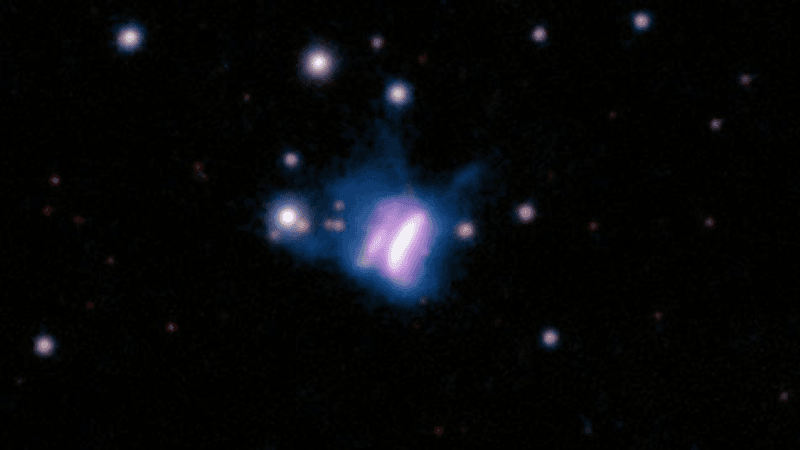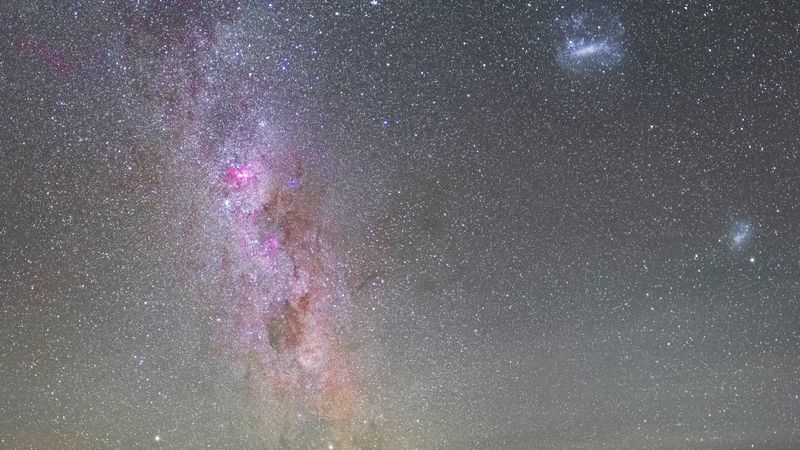When galaxies merge the supermassive black holes at their core can get close enough to affect each other, sometimes eventually merging. However, a team at the University of Cape Town have found something special - three black holes at the heart of a colliding galaxy pair.
Three years ago it was discovered that SDSS J150243.1+111557 contains two black holes, separated by a distance of 24,000 light years. Even on galactic scales that isn't all that close – slightly less than the sun is to the center of our galaxy. This suggests that the two galaxies still have a fair way to go to complete their merger.
Now however, Dr Roger Deane of the University of Cape Town has discovered that SDSS J150243.1+111557 is actually a lot more interesting than its name. In Nature Deane reports that one of these black holes is actually a pair, 450 light years apart.
From a stellar point of view 450 light years is a long way, we can't even see most stars at that distance with the naked eye, although a large star such as Adhara, the second brightest star in Canis Major is easily visible at a similar distance. Black holes are a different matter, with gravity so powerful that the pair are not only orbiting each other, but that one is altering the path of the jet of electrons the other is putting out.
Black holes emit jets of high speed particles, and in some cases these jets have been seen to be spiraling, under what is thought to be the gravitational influence of another black hole. However, this is the first time this black hole's presence has been confirmed with other evidence.
Observing the black holes was a challenge, since J150243.1+111557 is almost 5 billion light years away. Deane used the European Very Long Baseline Interferometry Network, which combines 18 telescopes around the world to act as if it was a single antenna almost the size of the Earth.
Deane aims to use the presence of spiraling jets as a clue to finding other closely interacting black hole pairs. He notes that J150243.1+111557 was only the sixth galaxy his team examined. “Either we got incredibly lucky and won the lottery,” Deane says, “or they’re more common than previously anticipated.”
Among the reasons to seek out close supermassive black hole pairs is that they represent one our our best chances to detect gravitational waves. Such enormously large objects experiencing powerful acceleration from each other's gravity should distort space-time in ways we may be able to observe. In the light of the continuing uncertainty about whether a gravitational wave from immediately after the Big Bang has been found, picking up smaller gravitational waves from nearer sources becomes more desirable than ever.
Triple black holes have been seen before, but the paper points out that the closest pair in any of the four previously identified triads is more than 7000 light years apart.




